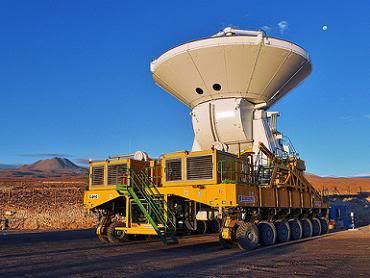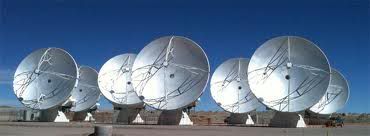Post by glactus on Jul 31, 2011 1:37:18 GMT

European segment arrives
ALMA project, that will revolutionize our knowledge of the Universe, now has a sufficient number of antennas in place to produce its first science observations. The 16th antenna, also the first European antenna to reach the observatory's Array Operations Site, joined antennas from the other international ALMA partners on 27 July 2011.

The Alma array - Is there anyone out there?
Each 12-meter diameter antenna is located at the Chajnantor plateau, 5,000 meters above sea level in the Atacama Desert in Chile. The addition of the 16th antenna means that astronomers will shortly begin using ALMA to conduct new scientific research.

The Alma dishes close up. The power of 66 segments
ALMA (Atacama Large Millimeter/sub-millimeter Array) is a huge high frequency radio telescope that will eventually be made up of 66 individual antennas.
When electronically combined they will simulate a telescope diameter of up to 16km - more than a thousand times the diameter of a single individual antenna within the array. Its vast size will allow astronomers to detect signals within and outside of our galaxy with greater clarity than has previously been possible.
The first European antenna, manufactured by the European AEM Consortium under contract from the European Southern Observatory (ESO), was handed over to ESO in April after six months of testing. Assembled at the Operational Support Facility at an altitude of 2,900 meters in the foothills of the Chilean Andes, it was equipped with highly sensitive detectors, which are cooled, and other necessary support electronics.
Now, one of the giant ALMA transporter vehicles has taken it 28 km further up the plateau and along the dry desert road to the Array Operations Site (AOS) location at 5,000m altitude. The AOS is the last port of call in a long journey that began when the component parts of the antenna were manufactured in factories across Europe, under the rigorous oversight of ESO.

Alma
Listening to M81
Credits: European Southern Obsevatory (ESO)
Images:These are Alma consortium and European AEM Consortium images.
Text by Space Daily.com


